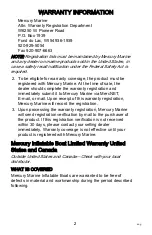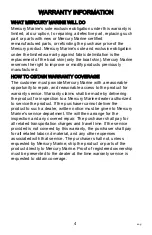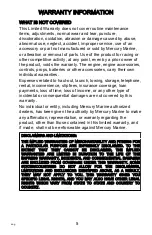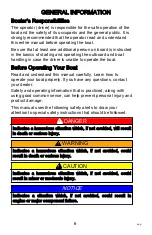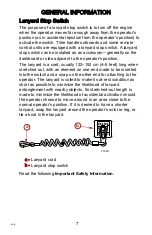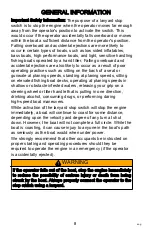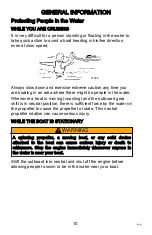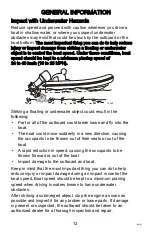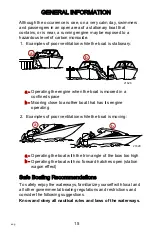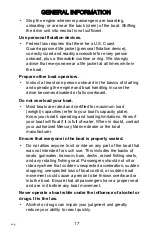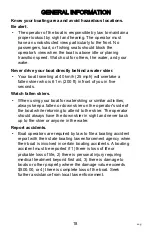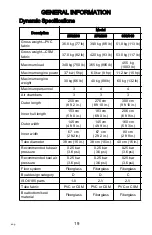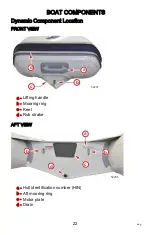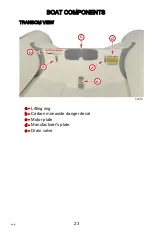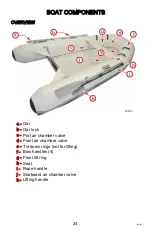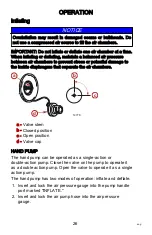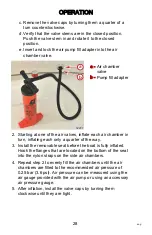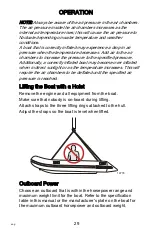
GENERAL INFORMATION
16
eng
• We recommend that all powerboat operators complete a
boating safety course. In the U.S., the U.S. Coast Guard
Auxiliary, the Power Squadron, the Red Cross, and your
state or provincial boating law enforcement agency provide
courses. For more information in the U.S., call the Boat U.S.
Foundation at 1‑800‑336‑BOAT (2628).
Perform safety checks and required maintenance.
• Follow a regular schedule and ensure that all repairs are
properly made.
Check safety equipment onboard.
• Here are some suggestions of the types of safety equipment
to carry when boating:
Approved fire extinguishers
Signal devices: flashlight, rockets or flares, flag, and
whistle or horn
Tools necessary for minor repairs
Anchor and extra anchor line
Manual bilge pump and extra drain plugs
Drinking water
Radio
Paddle or oar
Spare propeller, thrust hubs, and an appropriate wrench
First aid kit and instructions
Waterproof storage containers
Spare operating equipment, batteries, bulbs, and fuses
Compass and map or chart of the area
Personal flotation device (one per person onboard)
Watch for signs of weather change and avoid foul weather
and rough
‑
sea boating.
Tell someone where you are going and when you expect to
return.
Passenger boarding.

